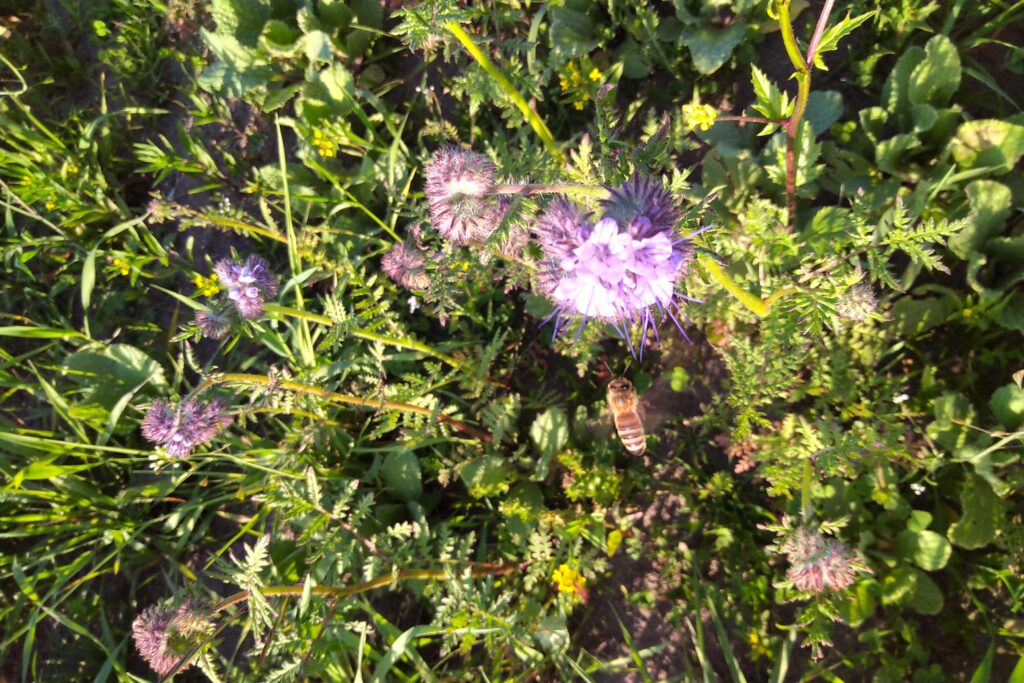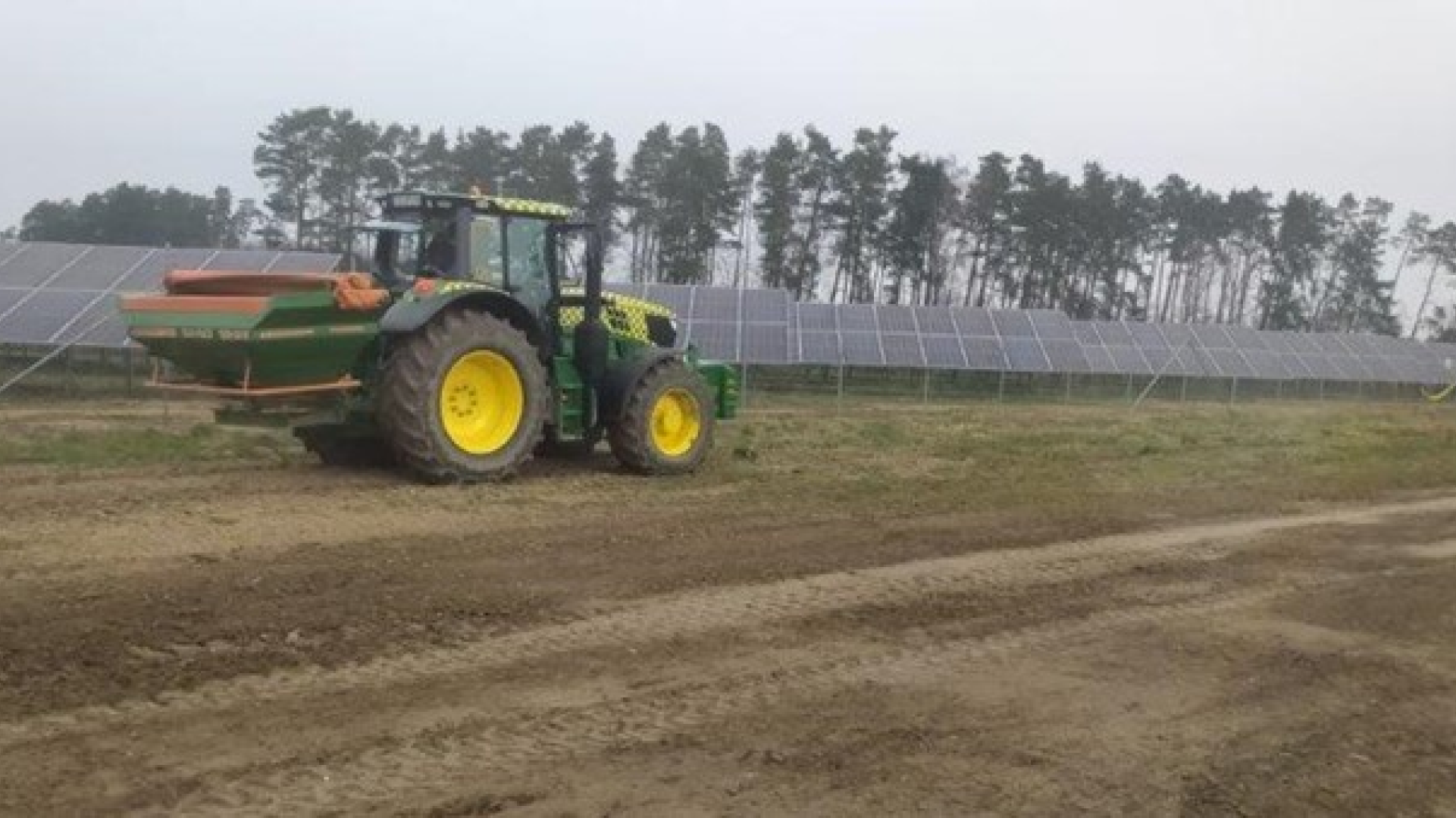Utilizing the space between panels by sowing native plant species there means creating a multi-hectare area that can be utilized by pollinating insects. It also serves as a habitat for small mammals, forming the food base for many species of birds and predatory mammals. Agriculturally unused areas also act as zones with increased rainfall retention.
The monitoring of biodiversity stems from the ethical values adopted within the Polenergia Group as well as the goals set in the ESG Strategy regarding environmental protection due diligence. Creating spaces dedicated to nature and ecosystem restoration is one of the main goals of the adopted in 2024 Biodiversity Strategy.
Therefore, we consistently collaborate with naturalists during the pre-construction and construction monitoring of new PV farms. Through collaboration with naturalists familiar with local conditions, we can create the best plant mixtures for sowing in a specific location. This was the case with the area of the newly constructed photovoltaic farm in Strzelino. This month, we sowed mixtures of nectar-rich plants and grasses on a total area of 1.3 hectares. So far, Canadian goldenrod has been growing on the PV Strzelino, which is an invasive species threatening native flora and insects. Based on studies conducted at PV Sulechów, we are convinced that invasive goldenrod species are naturally displaced by native species, such as snake root, which is included in the mixture sown in Strzelino.
In addition to sowing meadows, planting shrubs has also been planned, for which four areas totaling 8816 m2 have been designated. Among the selected species are sea buckthorn, hawthorn, blackthorn, and wild rose – a total of 2205 seedlings will be planted, providing shelter and food bases for animals.





